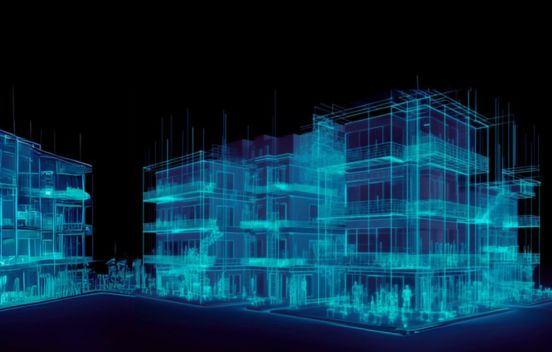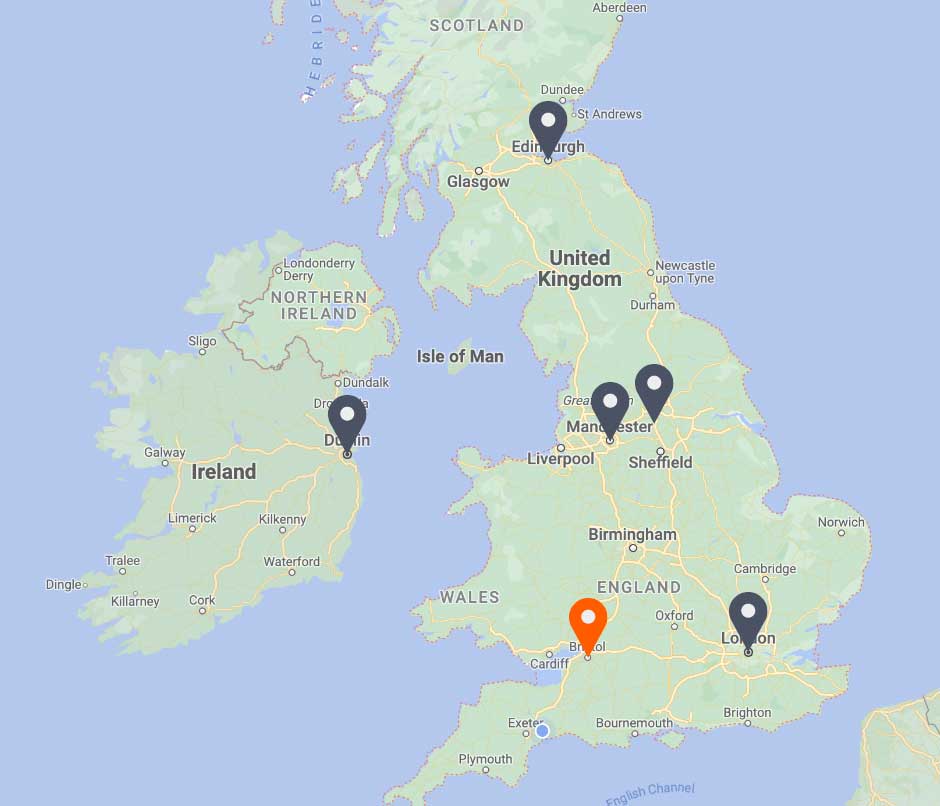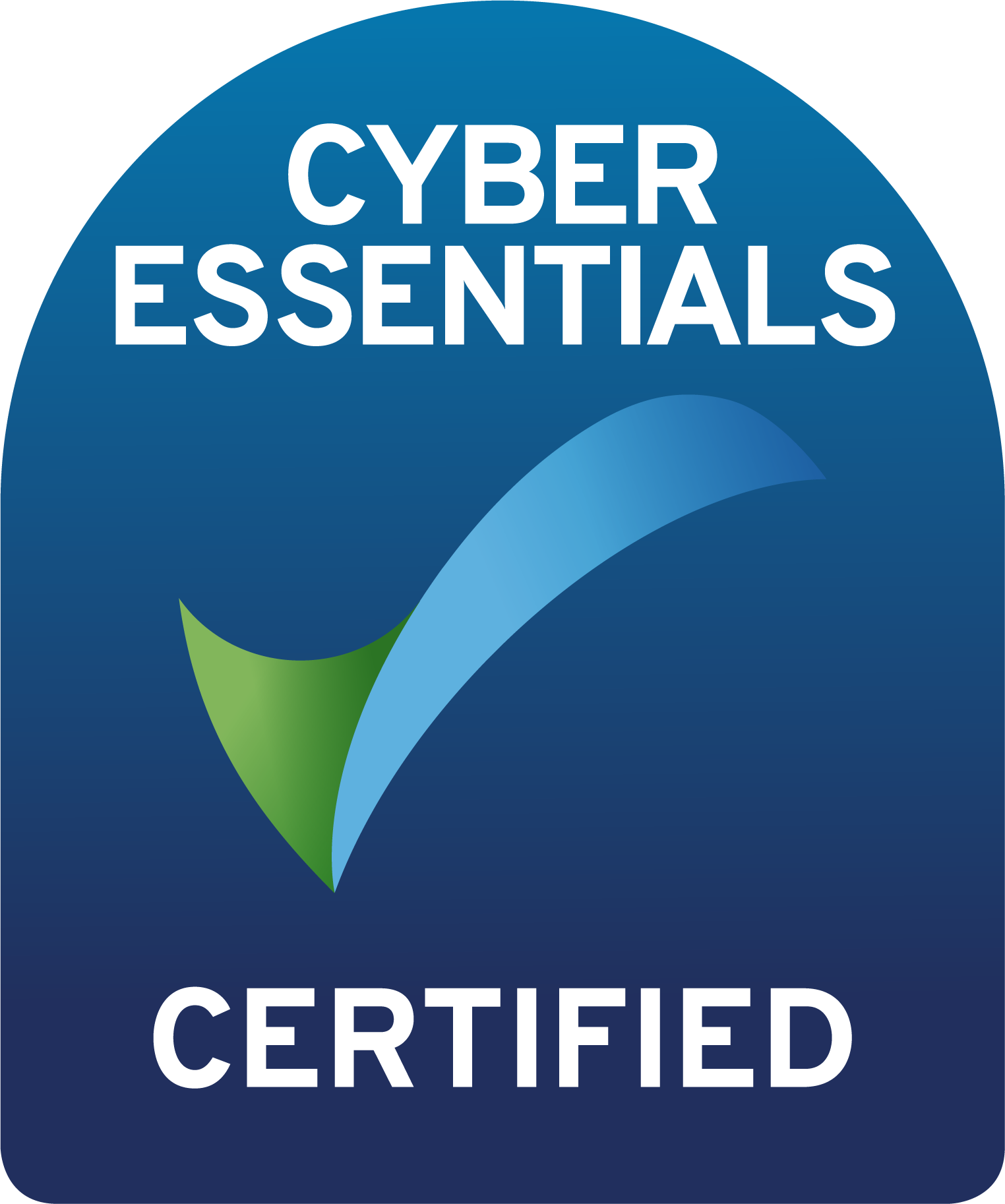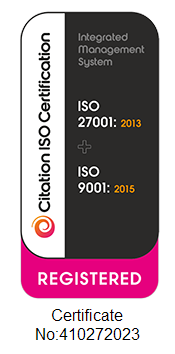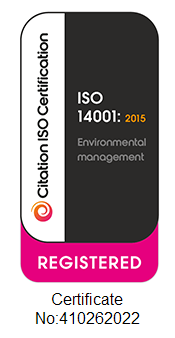THIS ARTICLE AT A GLANCE
CONTACT ETS
If you have any questions or would like to discuss further what you should be doing, ETS is here and willing to help.
Call 0117 205 0542
Email enquiries@energy-ts.com
Submit a contact form
CHECK OUR SERVICES
An Introduction to Indoor Air Quality

An office or work place should be free of airborne pollutants and pathogens that could affect or cause health issues to occupants or give rise to discomfort.
According to Public Health England (2018), poor air quality is the largest environmental risk to public health in the UK. We all know about the damaging effects of breathing in polluted air when outside, but what about the air we breathe indoors? We spend about 90% of our time indoors, therefore our lifetime exposure to air pollutants will be significantly influenced by indoor air quality.
What is Indoor Air Quality (IAQ)?
The quality of air both indoors and outdoors is critical to the health, comfort and well-being of building users. The most common sources of indoor air pollutants are poor ventilation systems, building materials, chemicals from cleaning products, and office equipment (e.g. printers). To remove these pollutants, a regular supply of fresh air should be provided throughout the building, with adequate ventilation and air supply rates. External pollution ingress should also be minimised or eradicated as far as possible.
Air quality is very important in the workplace. Regular workforce complaints, increased sick leave and general discontentment with surroundings could be an indicator of poor indoor air quality. If not addressed, companies or building owners could experience something known as Sick Building Syndrome (SBS). The Health and Safety Executive has published guidance on this phenomenon and how to deal with SBS.
How to manage and monitor indoor air quality and pollution?
Building temperature is a common cause of tenant / occupant complaints. Sporadic and constant alteration of temperature set points should be discouraged. Not only does this cause issues with comfort conditions, but it also creates challenges in managing indoor air quality.
Indoor Air Quality (IAQ) assessments should be completed either periodically as part of routine maintenance checks; or reactively, in response to identified health concerns. An IAQ suite typically comprises:
- Measurement and analysis of workplace Carbon Dioxide (CO2) concentrations
- Measurement and analysis of airborne particles
- Measurement and analysis of airborne bacteria and fungi
- Measurement and analysis of surface bacteria and fungi in ventilation systems and ductwork
- Measurement and analysis of thermal comfort conditions (temperature and humidity)
- Measurement and analysis of specific parameters in response to specific health complaints
Where does Indoor Air Pollution come from?
Internal pollution comes from a variety of sources, the main types being summarised below:
- Gaseous pollutants
- Volatile organic compounds often used in building materials, paints. Coatings, plastics, etc. (formaldehyde and benzene in example). NB: Some sources provide not only odours but can be carcinogenic as well
- Airborne pathogens
- Odours
- Particulates
Gaseous Pollutants
Gaseous Pollutants can come from a variety of sources. The sources of contaminants depend on the type of building, location and types of activity being undertaken. One of the key areas of concern in an office space is Carbon Dioxide (CO2). Densely occupied office space can lead to high concentrations of CO2, which can make occupants feel lethargic and tired.
The Chartered Institution of Building Services Engineers (CIBSE) recommends that concentrations of 1000 parts per million (PPM), as an instantaneous value or 5000ppm of an 8-hour time weighted average, should be avoided. Typically, an office should be expected to maintain a level of around 650ppm. The levels of CO2 in an office can also be used to determine if a building has adequate ventilation and often forms part of the IAQ checks.
Particulates
Particulates generated from various sources such as combustion appliances, aerosol sprays, clothing, carpet, wallboard and paper are a serious health concern in an enclosed office environment. Sufferers of asthma, allergic rhinitis and eczema are the most vulnerable to illnesses triggered by inhaling these particulates. In an office space, a high particulate concentration can also be an indication of poor office ventilation, hygiene or cleaning regime. Occupational standards dictate that 150µg/m3 over a 24-hour period should be avoided.
Airborne Pathogens
The effects of microbes (bacteria and fungi) in ductwork systems are often ignored. Heavy concentrations of contaminated deposits that enter a buildings ventilation system can release spores into the airstream. It is therefore essential to ensure the all the HVAC systems maintain an acceptable level of hygiene. Bacterial and fungal monitoring often forms part of the IAQ checks that a specialist would undertake. Samples are taken using agar plates for both ‘contact’ (surface) and airborne bacteria and fungi to provide an indication of hygiene.
How to maintain adequate indoor air quality?
Periodic maintenance is essential on any system – ventilation and air conditioning is no exception. Filter changes, cleaning air grilles and ensuring that temperature settings are correct are all standard procedure under a planned preventative maintenance (PPM) regime. However, system hygiene inspections and the cleaning of main components (duct, coils, filters, main distribution sections, etc.) can often be overlooked or not considered; this is partly because access is often restrictive for many parts of the system, particularly in older buildings. The office cleaning regime also plays an important role in influencing air quality therefore, the standard and quality of cleaning should also be monitored.
Principally, the components of a comprehensive system in managing and maintaining adequate levels of Indoor Air Quality (IAQ) are as follows:
- Standard PPM on air conveyance system
- Regular hygienic assessment and analysis of the conveyance system components and distribution
- Periodic assessment of Indoor Air Quality with a standard suite of sampling and analysis
- Ad hoc cleaning of the conveyance system as prescribed following poor hygiene indicators
- Reactive testing when and if health issues occur to identify, isolate and eradicate any source of contamination
Final thoughts
If you are looking for an energy management system that is tailored to your business needs, ETS can provide you with 25 years of experience in dramatically improving energy efficiency and reducing environmental impacts. Whether your businesses have individual assets or large international portfolios, ETS can assist you in saving substantial amounts of money while significantly reducing your carbon performance.
To discuss your requirements, get in touch. You can contact us by calling 0117 205 0542 or drop us an email at enquiries@energy-ts.com.
An office or work place should be free of airborne pollutants and pathogens that could affect or cause health issues to occupants or give rise to discomfort.
According to Public Health England (2018), poor air quality is the largest environmental risk to public health in the UK. We all know about the damaging effects of breathing in polluted air when outside, but what about the air we breathe indoors? We spend about 90% of our time indoors, therefore our lifetime exposure to air pollutants will be significantly influenced by indoor air quality.
What is Indoor Air Quality (IAQ)?
The quality of air both indoors and outdoors is critical to the health, comfort and well-being of building users. The most common sources of indoor air pollutants are poor ventilation systems, building materials, chemicals from cleaning products, and office equipment (e.g. printers). To remove these pollutants, a regular supply of fresh air should be provided throughout the building, with adequate ventilation and air supply rates. External pollution ingress should also be minimised or eradicated as far as possible.
Air quality is very important in the workplace. Regular workforce complaints, increased sick leave and general discontentment with surroundings could be an indicator of poor indoor air quality. If not addressed, companies or building owners could experience something known as Sick Building Syndrome (SBS). The Health and Safety Executive has published guidance on this phenomenon and how to deal with SBS.
How to manage and monitor indoor air quality and pollution?
Building temperature is a common cause of tenant / occupant complaints. Sporadic and constant alteration of temperature set points should be discouraged. Not only does this cause issues with comfort conditions, but it also creates challenges in managing indoor air quality.
Indoor Air Quality (IAQ) assessments should be completed either periodically as part of routine maintenance checks; or reactively, in response to identified health concerns. An IAQ suite typically comprises:
- Measurement and analysis of workplace Carbon Dioxide (CO2) concentrations
- Measurement and analysis of airborne particles
- Measurement and analysis of airborne bacteria and fungi
- Measurement and analysis of surface bacteria and fungi in ventilation systems and ductwork
- Measurement and analysis of thermal comfort conditions (temperature and humidity)
- Measurement and analysis of specific parameters in response to specific health complaints
Where does Indoor Air Pollution come from?
Internal pollution comes from a variety of sources, the main types being summarised below:
- Gaseous pollutants
- Volatile organic compounds often used in building materials, paints. Coatings, plastics, etc. (formaldehyde and benzene in example). NB: Some sources provide not only odours but can be carcinogenic as well
- Airborne pathogens
- Odours
- Particulates
Gaseous Pollutants
Gaseous Pollutants can come from a variety of sources. The sources of contaminants depend on the type of building, location and types of activity being undertaken. One of the key areas of concern in an office space is Carbon Dioxide (CO2). Densely occupied office space can lead to high concentrations of CO2, which can make occupants feel lethargic and tired.
The Chartered Institution of Building Services Engineers (CIBSE) recommends that concentrations of 1000 parts per million (PPM), as an instantaneous value or 5000ppm of an 8-hour time weighted average, should be avoided. Typically, an office should be expected to maintain a level of around 650ppm. The levels of CO2 in an office can also be used to determine if a building has adequate ventilation and often forms part of the IAQ checks.
Particulates
Particulates generated from various sources such as combustion appliances, aerosol sprays, clothing, carpet, wallboard and paper are a serious health concern in an enclosed office environment. Sufferers of asthma, allergic rhinitis and eczema are the most vulnerable to illnesses triggered by inhaling these particulates. In an office space, a high particulate concentration can also be an indication of poor office ventilation, hygiene or cleaning regime. Occupational standards dictate that 150µg/m3 over a 24-hour period should be avoided.
Airborne Pathogens
The effects of microbes (bacteria and fungi) in ductwork systems are often ignored. Heavy concentrations of contaminated deposits that enter a buildings ventilation system can release spores into the airstream. It is therefore essential to ensure the all the HVAC systems maintain an acceptable level of hygiene. Bacterial and fungal monitoring often forms part of the IAQ checks that a specialist would undertake. Samples are taken using agar plates for both ‘contact’ (surface) and airborne bacteria and fungi to provide an indication of hygiene.
How to maintain adequate indoor air quality?
Periodic maintenance is essential on any system – ventilation and air conditioning is no exception. Filter changes, cleaning air grilles and ensuring that temperature settings are correct are all standard procedure under a planned preventative maintenance (PPM) regime. However, system hygiene inspections and the cleaning of main components (duct, coils, filters, main distribution sections, etc.) can often be overlooked or not considered; this is partly because access is often restrictive for many parts of the system, particularly in older buildings. The office cleaning regime also plays an important role in influencing air quality therefore, the standard and quality of cleaning should also be monitored.
Principally, the components of a comprehensive system in managing and maintaining adequate levels of Indoor Air Quality (IAQ) are as follows:
- Standard PPM on air conveyance system
- Regular hygienic assessment and analysis of the conveyance system components and distribution
- Periodic assessment of Indoor Air Quality with a standard suite of sampling and analysis
- Ad hoc cleaning of the conveyance system as prescribed following poor hygiene indicators
- Reactive testing when and if health issues occur to identify, isolate and eradicate any source of contamination
Related Article
8 Ways Businesses Can Reduce Energy Use in the Workplace This Winter
Discover how to comply with ESOS Phase 4 and unlock energy-saving opportunities for your business. This guide explains the requirements, highlights key deadlines, and provides actionable strategies. Learn how energy audits, tailored action plans, and expert support can reduce costs, improve efficiency, and align your organisation with sustainability goals.
ESOS Action Planning: Complying with Phase 4 and Implementing Energy Saving Strategies
Discover how to comply with ESOS Phase 4 and unlock energy-saving opportunities for your business. This guide explains the requirements, highlights key deadlines, and provides actionable strategies. Learn how energy audits, tailored action plans, and expert support can reduce costs, improve efficiency, and align your organisation with sustainability goals.
Important Update: What You Need to Know about ESOS Phase 3
Time is ticking for the ESOS Phase 3 deadline. The Environment Agency announced that the reporting system is available now. For organisations qualifying for ESOS Phase 3, the deadline for submitting a compliance notification is 5 June 2024, and organisations should still look to meet this compliance notification deadline where possible.












